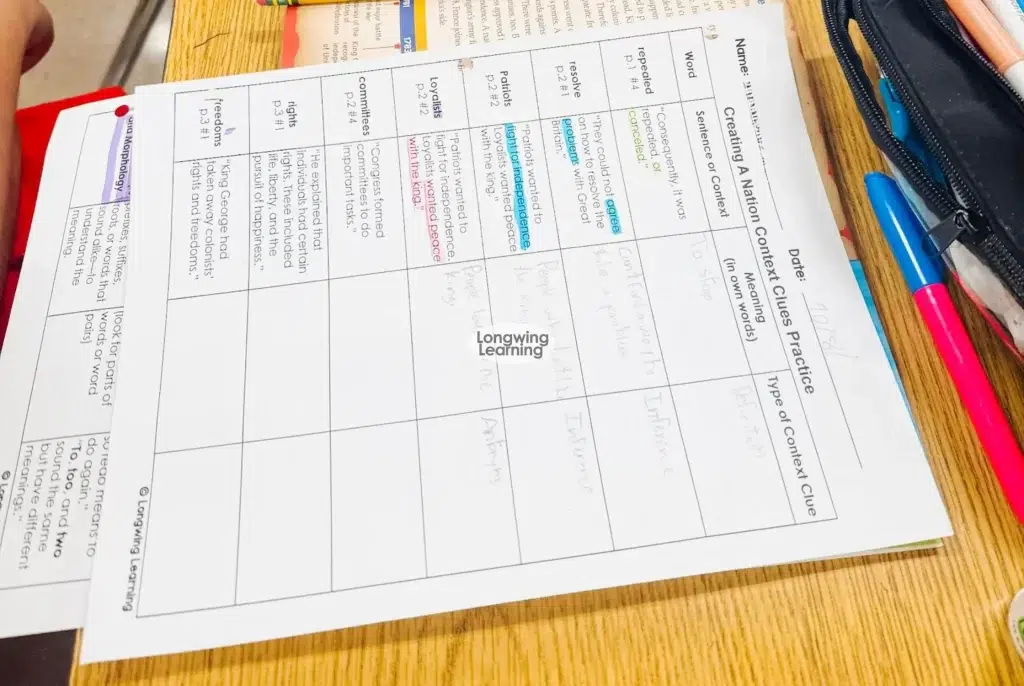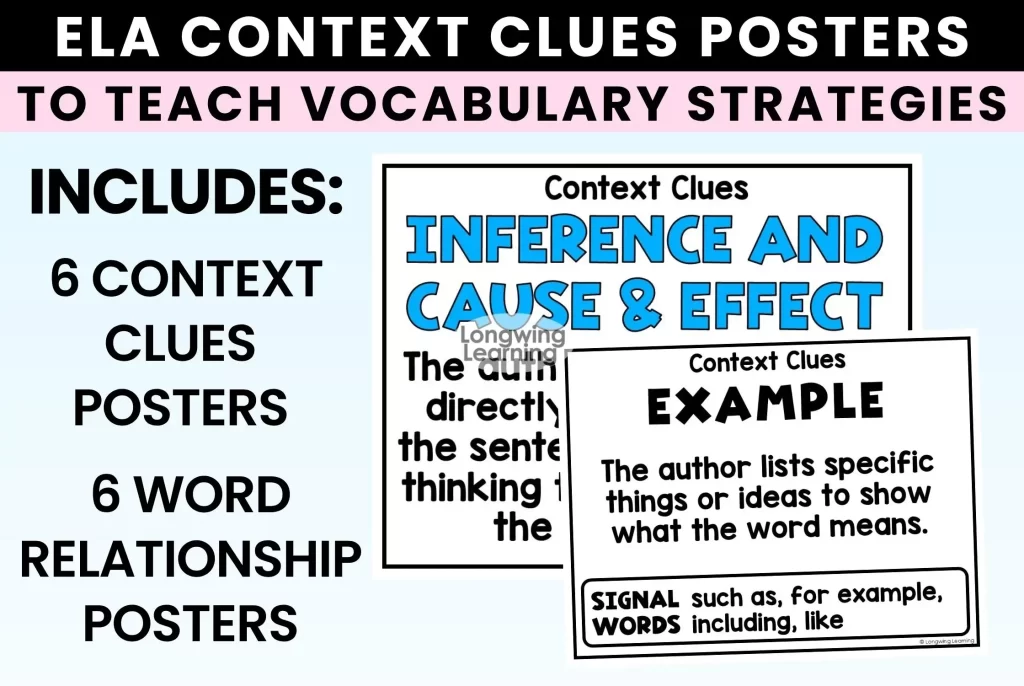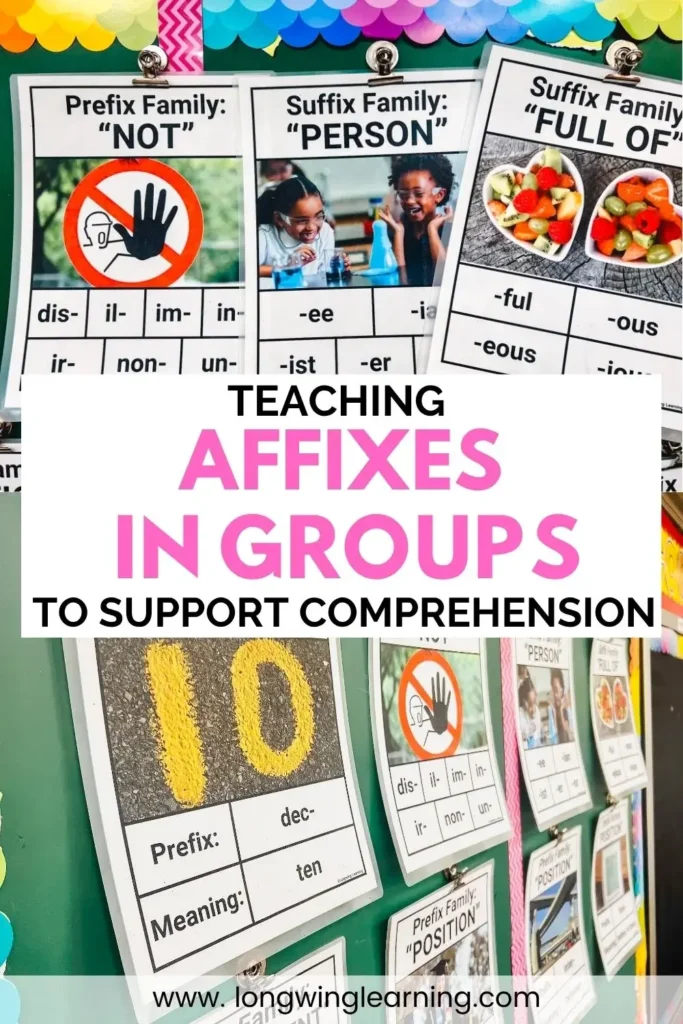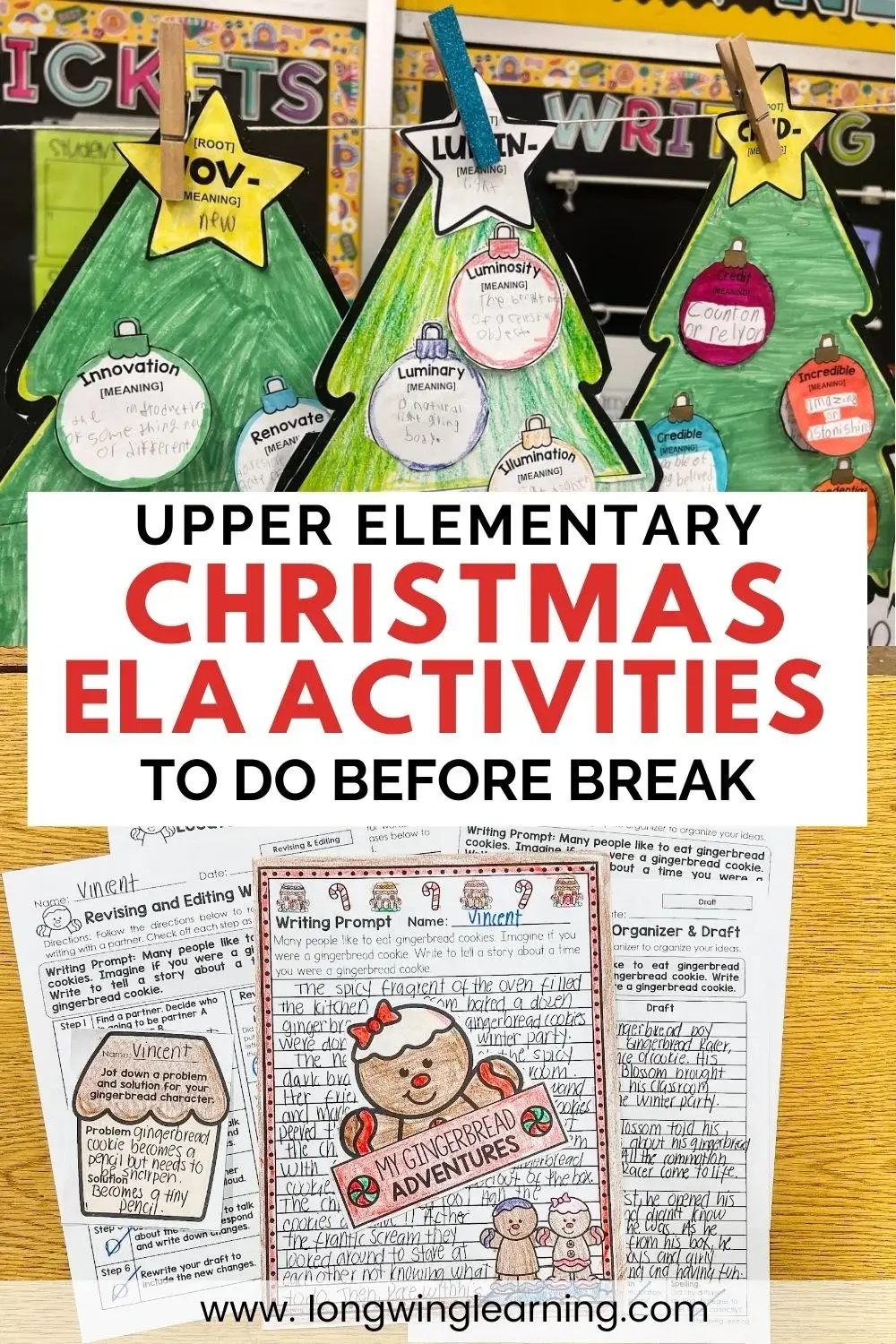When it comes to teaching prefixes and suffixes, I stopped treating them like random lists and started teaching them as word families. Suddenly, vocabulary made sense for my students.
In this post, I’ll share how I weave morphology into context clue lessons, using short daily routines that deepen comprehension and writing skills.

If you’re still teaching prefixes and suffixes as random, disconnected word lists…
It’s time for a major upgrade.
In my upper elementary classroom, I teach prefixes, suffixes, and roots as word families, sets of related terms that help students decode, comprehend, and analyze vocabulary.
It’s part of how I support context clue instruction through morphology, and honestly? It’s one of my favorite strategies. It’s fast, effective, and students retain the information because it’s connected, not random.
In this post, I’ll walk you through why I teach affixes this way, how I do it, and how you can try it with just 5–10 minutes a day. Bonus: you can grab the exact reference sheet I use with my kids!
Table of Contents
Teaching Prefixes and Suffixes in Groups

When I used to teach affixes as one-offs (“Here’s the prefix pre-… now let’s move on”), it just didn’t stick.
So I changed the approach. Now, I teach affixes as word families. That means:
- Grouping prefixes that carry similar meanings
- Tying suffixes to spelling and grammar rules
- Connecting roots with origin stories and usage patterns
Here’s why this works:
| Results | Benefit |
| Students make connections | They see how one prefix (like pre-) appears in many words with related meanings. |
| Faster learning | Teaching them together reinforces pattern recognition. |
| Better vocabulary | Students understand how words are built, not just memorized. |
| Stronger writing | When students know how a suffix changes a word’s function, they use it intentionally. |
And for me as the teacher? It makes planning SO much easier.
Each week, I choose 1–2 related affixes, and we focus on them in short bursts all week long.
My Step-by-Step Routine for Teaching Prefixes and Suffixes

My routine isn’t fancy, but it’s effective.
Here’s how it usually looks:
1. Introduce the Affix
We start with one affix. I:
- Pronounce it out loud
- Air write it with the students
- Talk about its origin (Latin? Greek?)
- Define it using a keyword and a visual
Example:
Prefix: pre-
Meaning: before
Keyword: preview
Visual: A movie ticket with “preview” on it
Students add this info to their vocabulary notebooks as we go.
2. Teach Spelling + Grammar (for Suffixes)
When we focus on suffixes, I treat it like an advanced phonics mini-lesson:
- What happens when you add -ed or -ing?
- Do you drop the e? Double the consonant?
- How does it change the part of speech?
This makes it feel purposeful—not just memorization.
3. Practice with Dictation + Context Sentences
Each week, we:
- Practice word dictation
- Try sentence dictation with embedded context clues
- Write original sentences using the affix and some form of context support
I don’t do all of this in one day. I spread it out:
Just 5–10 minutes a day, focused and consistent.
4. Spiral Review + Oral Practice
For every 4 roots or affixes we learn, we do a quick oral review:
- I give the meaning, students say the root
- Or I say the affix, and they respond with the meaning
It becomes a routine part of our week, and it sticks.
The Benefits of Teaching Prefixes and Suffixes in Groups

Teaching morphology IS teaching context clues.
When students come across an unfamiliar word, they use:
- The context around it (yes)
- PLUS the structure of the word itself
For example:
“After her posttest, the student was excited to review what she had learned.”
Students might use the prefix post- (meaning after) + the context of “review what she had learned” to infer that posttest comes after instruction.
You’re showing them that word parts + context = comprehension.
And THAT is a skill they take with them forever.
How I Teach Prefixes and Suffixes Throughout the Week


Students:
- Keep a vocabulary notebook
- Add new affixes/roots weekly
- Glue in mini anchor charts or reference strips
- Use our wall charts to review before reading or writing tasks
And when they spot a root or affix in a text?
They call it out. That’s when I know it’s sticking.
How I Add Morphology in My Reading Block

I embed morphology into reading lessons all the time:
- While previewing the text
- During close reading (“Look at that suffix—what does it tell us?”)
- In test prep when we’re reviewing tough vocabulary questions
- In short constructed responses: “How does the root help you understand this word?”
And students feel empowered.
They’re no longer just guessing at big words! They’re breaking them down and understanding them.
Download the Word Relationship Reference Sheet
Need a ready-to-use tool to launch this strategy? Grab my Context Clue Reference Chart.
It includes:
- Common clue types
- Examples for each category
Perfect for gluing into vocabulary notebooks or using during reading lessons!
Want Ready-to-Go Resources?

The Context Clues Poster Pack includes visuals for all six clue types, including word relationship.
You’ll also find:
These tools all work together to deepen vocabulary.
Teaching Prefixes and Affixes in Upper Elementary
Teaching vocabulary shouldn’t feel like throwing spaghetti at the wall and hoping something sticks.
When you shift from isolated word lists to connected word families, you give students the tools to decode, comprehend, and analyze with confidence.
Try it in your classroom and tag me @longwinglearning when you see those lightbulbs go off!

Explore the Full Context Clues Series
Want to keep going?
This post is the fifth in my Context Clues Series; check out:
- What are the 6 Types of Context Clues?
- Why Explicitly Teaching Context Clues Changes Everything
- How I Use Color Coding Context Clues to Teach Vocabulary
- Teaching Inferencing Context Clues
- How Teaching Prefixes and Suffixes in Groups Boosts Comprehension
- How to Help Students Analyze Context Clues (Not Just Spot Them)










